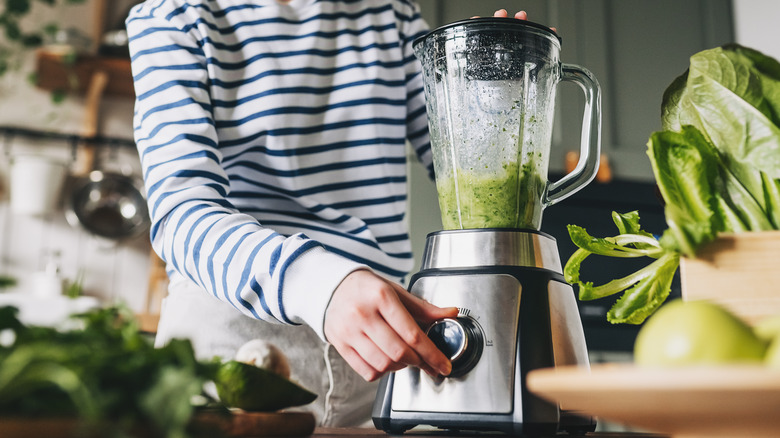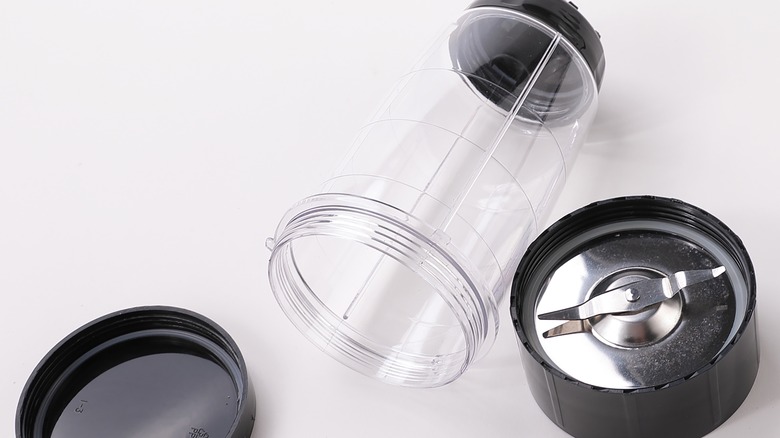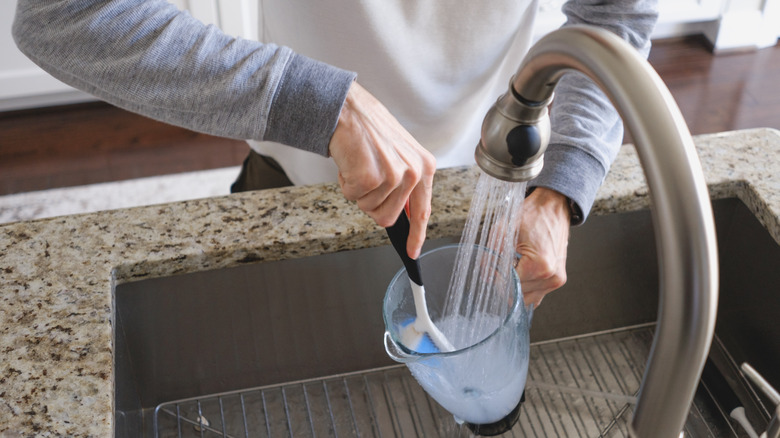Your Blender Is (Probably) Nasty – Especially If You Don't Do This
You've got a long day ahead and time is scarce. All you want to do is whip up a quick smoothie, get on with your life, and save a bit of time while you're at it. So instead of doing a thorough cleaning job on your trusty blender, you turn on the hot water to give it a quick rinse, thinking that because there's no residue in sight, all is well. But, is it though?
@nikidetrich Thank you for your thoughts and prayers at this time #storytime
♬ Monkeys Spinning Monkeys – Kevin MacLeod & Kevin The Monkey
As a recent viral TikTok video pointed out, rinsing your blender isn't enough. Food residue that hides under the blade or in the crevices doesn't just magically disappear. Over time, it can rot, smell, or even attract bugs. If you're not already washing your blender with soap and warm water after each use, this is your official wake-up call.
You don't need a fancy system or anything; just a little soap, attention to detail, and maybe a rubber spatula to help you reach those stubborn corners. Disassembling any removable parts, scrubbing the nooks and crannies, and letting everything dry completely before reassembling goes a long way. It's a small step that can save you from a gross surprise when you go to use your blender in the future. Also, there's no reason not to step up your kitchen hygiene in general. Don't let bad habits get in the way of a good smoothie, especially if you're making them the right way.
Why a quick rinse isn't cutting it
A swirl of warm water might make your blender look clean, but that's surface-level deception. The real mess is usually tucked out of sight, where the blade meets the base, or beneath the gasket ring. That's where the leftovers from your banana spinach smoothie or protein shake like to stick around, eventually turning into crusty, smelly gunk that can be tough to remove — and even tougher to ignore once it starts stinking.
Blenders are designed to handle a lot, but they need proper upkeep to stay in good shape. Smoothies made with fruits or dairy, in particular, leave behind sugars, proteins, and other additions which are perfect fuel for bacteria and insects. TikTok videos and kitchen tests have shown just how nasty things can get when you think a rinse is enough. Once you take apart the base or the blade gasket, it's not uncommon to find hidden residue or even black mold.
If that sounds unpleasant, it is. But it's preventable with just a little extra effort you won't want to bypass out of laziness. Think of your blender like any other dish. If food touched it, it needs to be washed with soap and warm water. A rinse only removes what you can see, not what's sticking to the parts you can't reach.
How to properly clean your blender every time
The best way to keep your blender up to par is to clean it right after you use it. Start by disassembling any removable parts, including the lid, gasket (if applicable), and blade assembly. If your model allows it, take the blade out completely for a more thorough scrub. Add warm water and a few drops of dish soap directly into the blender, secure the lid, and run the blender for 30 seconds to a minute. This creates a built-in scrubbing action that loosens food residue from all sides.
After that quick self-clean cycle, rinse everything thoroughly with clean water. Then, take apart the components again and give them a gentle hand wash with a sponge or brush, paying special attention to the threads and seals where food can hide. Let all parts dry completely before putting the blender back together. If you're storing it with the lid on, leave it slightly ajar to allow airflow and prevent trapped moisture.
Doing this after every use might sound like a hassle, but it only takes a few minutes and helps prevent long-term damage to the blender and disgusting bacteria (or bugs) from showing up later. Keeping your blender clean means your deliciously thick soups, smoothies, and sauces won't pick up any off flavors from old food residue. By building this habit into your routine, you'll extend the life of your appliance and avoid the nasty buildup that a simple rinse just can't fix.


